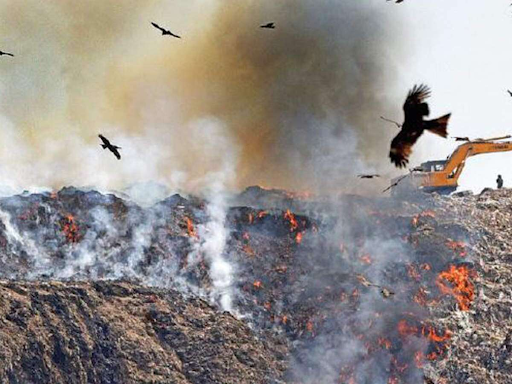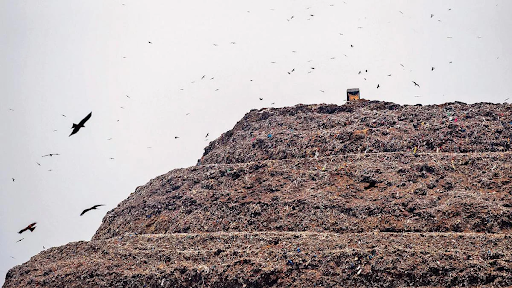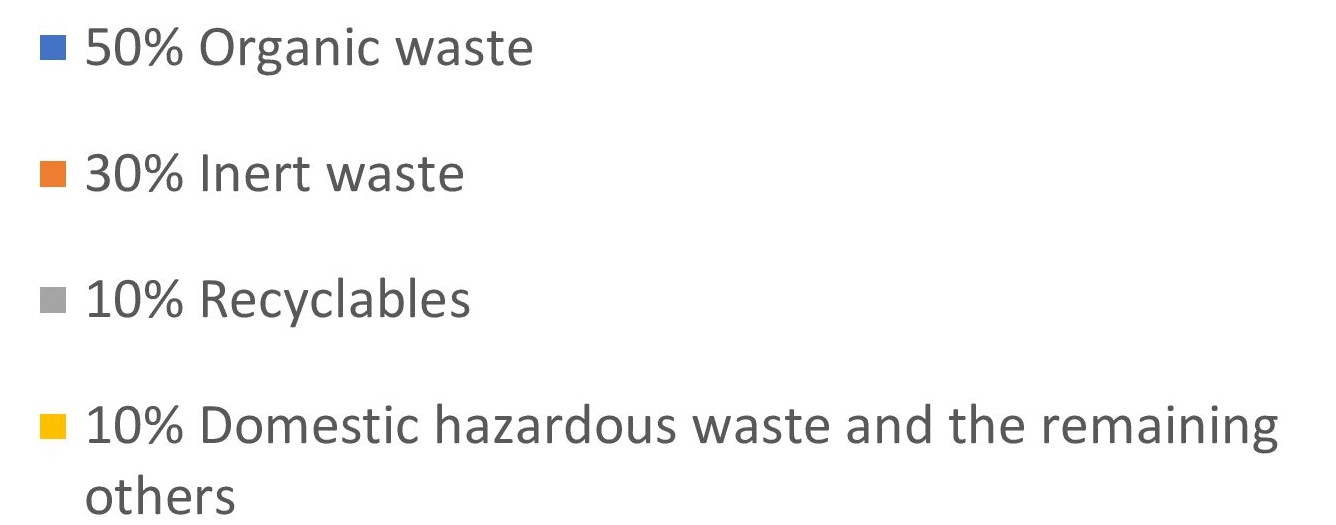The site of a garbage mountain or landfill is not uncommon to find in Indian cities these days. In fact, every city in India now has a site dedicated/allocated as man-made ‘dump site’, where the solid waste of the city is dumped and disposed of. It is estimated that some 800 million tonnes has been ‘disposed of’ in the 3,159 dump sites across the country, according to data from the Central Pollution Control Board (CPCB).
In New Delhi itself, we have three landfills/dump sites (Ghazipur, Bhalswa and Okhla), which have been in commission since the late 1990s and are still used by the city corporations to discard the waste. Over 28 million tonnes of waste lay at these landfill sites. The Ghazipur dump, which is currently at the height of 65 metres of garbage, is already in the running to be taller in height than national monuments like Qutub Minar and Taj Mahal. Bhalswa and Okhla sites have already been declared exhausted but the untreated waste is still being dumped there with no other place to go in the city. In a recent study, it has been submitted that these landfills have cost more than ₹450 crores in environmental degradation to the national capital so far. The big question is what kind of waste is being dumped in these landfills and why are the landfills so dangerous to human health and the environment.

INDIA - ONE OF THE HIGHEST WASTE GENERATING NATIONS
An estimated 2.01 billion tonnes of waste were generated globally in 2016, and this number is expected to grow to 3.40 billion tonnes by 2050 (depicting a 70% increase) under a business-as-usual scenario. In a recent study, it was reported that India has generated 277.1 million tonnes of waste annually, and is likely to touch 387.8 million tonnes in 2030 and 543.3 million tonnes by 2050. India has been tagged as one of the highest waste generating nations in the world.
With rapid population growth and urbanization, the volume of waste generation in Indian cities has been rising significantly over the past few years. Over 377 million urban people live in over 8,000 towns and cities in India and generate 62 million tonnes of municipal solid waste per annum, and this waste generation is projected to rise to 165 million tonnes by 2030.

MUNICIPAL SOLID WASTE - TYPES AND CONTRIBUTION
Solid waste can be separated into five major categories: (i) biodegradable waste or organic waste (food and kitchen waste, green waste vegetables, flower, leaves, fruits and paper, etc.), (ii) inert and non-biodegradable waste (construction and demolition waste, dirt, debris, etc.), (iii) recyclable waste (plastic, paper, bottles, glasses, etc.), (iv) domestic hazardous waste (including sanitary pads, diapers, etc), and (v) e-waste (including batteries etc).


Source: Swachh Bharat Mission- Urban (Ready Reckoner)
SOLID WASTE MANAGEMENT SYSTEM - FROM COLLECTION
TO DISPOSAL
Waste generation is now a byproduct of our lifestyle which can be reduced by adopting a sustainable lifestyle. However, waste generation is not the only cause impacting our environment, the
key element is the management of this generated waste that is threatening our planet severely. Waste collection in India is around 75-80%,of which
only 22–28% is processed and treated, and the remaining 80% of the collected waste is often dumped indiscriminately
and unsanitary in landfills or are burnt in open spaces, leading to health and environmental degradation.

INDIAN LANDFILLS - MAJOR CONTRIBUTOR TO GHG EMISSIONS
Landfilling technology has been found to be one of the cheapest and easiest ways of disposing the waste both globally and in India. However, the
landfills/dump grounds used currently are not sustainable, as they have no foundation,
leachate management or treatment facilities or protection areas. The collected waste is just collectively dumped in these areas. In India,
80% of the collected waste or estimated 31 million tonnes of collected waste/annually is dumped at the landfill sites. Waste at the landfills have been known to be
one of the major sources of anthropogenic greenhouse gas (GHG) emissions and a key contributor
to global warming.
When the
waste is buried in landfills a complex series of chemical and biological reactions is initiated, where the
organic/biodegradable part of the waste is broken down by microorganisms releasing harmful gasses, including methane and carbon dioxide. The composition of the landfill gasses is
roughly 60% methane, 40% carbon dioxide and a small amount of non-methane organic compounds. The municipal solid waste generated by households is considered the
third largest anthropogenic source of methane (CH4) emissions, constituting 11% of all global CH4 emissions.
Methane is a potent greenhouse gas
28 to 36 times more effective than CO2 at trapping heat in the atmosphere over a 100-year period, and currently is the
second largest contributor to global warming.
India is considered as
one of the top emitters of methane gas in the world with 409 million tonne CO2e generated in 2016, of which 14.46% was from the waste sector. The emission of GHGs from waste in India is also
twice the global average.
CALL FOR ACTION
According to the guidelines of
Swachh Bharat Mission only the inert waste and process rejects – in no case to exceed 20% of the total waste – which are not suitable for either biodegradable
and non-biodegradable waste treatment, can be sent to landfill sites for disposal. However, this looks like a distant reality.
The problem of waste management in India is not restricted to excessive waste generation but also the failure of a systemic waste management process, including non-segregation of waste at source leading to excessive
GHG emissions at such unhygienic landfills.
